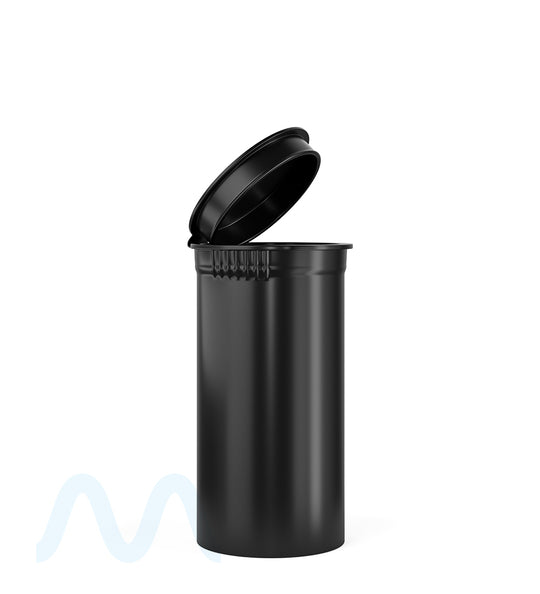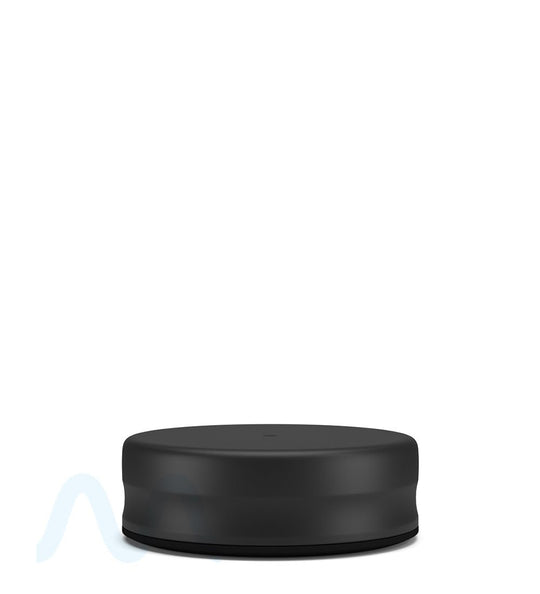Food Containers
Keep your consumable items fresh and secure with our food containers. Available in a variety of styles and sizes, these containers are perfect for maintaining freshness and are offered at attractive wholesale prices.
Frequently Asked Questions About Food Containers
Are Food Containers Child Proof?
Yes. Since authorities consider regulated products consumables as adult products, they should have a child-resistant mechanism. Due to the similarities in appearance between regulated products consumables and ordinary food products, minors and unsuspecting people can easily mistake the two. Also, since the most common regulated products consumables are sugary treats like gummies and candy, children can easily mistake them for their active compounds-free counterparts. For this reason, child-proof packaging is a necessity for regulated products consumables. The law also requires regulated products food packaging products to be child-proof. According to the Federal Poison Prevention Packaging Act of 1970, food containers must be child-proof to prevent the unintentional poisoning of children.
How Do I Label Food Containers?
Labeling food containers can be broken down into three categories. These include primary, informational, and supplemental label panels. The primary panel goes on top or the front of the container and indicates the product identity, weight or volume of the consumables, and amount of active compounds and plant extract per serving. It should also be noted that the product is regulated products infused on this location. The informational panel, which should include government warning statements for medical products, can be placed anywhere on the exterior of the container. Lastly, the supplemental label panel contains all other vital information not found on the other panels, including manufacture and expiry dates, allergens, nutritional content, instructions for use, and a list of ingredients.
What Types of Food Containers are Available?
Our store has a wide array of food packaging that cater to different types of medical products. Tin containers are some of the most prevalent types of food packaging available on our online store. They are strong and versatile, allowing them to store various regulated products consumables. Mylar bags are also a popular packaging option for regulated products consumables as they have excellent child-proof properties. They are also ideal for keeping products fresh and preventing degradation. Other food containers include pop-top bottles, glass jars, plastic jars, Pinch 'N Flip cases for food products, and snap boxes.
Food Containers
Table of Contents
Food Containers: Commercial Packaging Solutions
Food containers are essential components of the modern food industry supply chain. These versatile packaging solutions protect products during transport, extend shelf life, and communicate brand values to consumers. For businesses seeking reliable food packaging options, selecting the right container type is crucial for product integrity and market success.
The food packaging industry has evolved significantly, with containers now serving multiple functions beyond basic product containment. Today's food packaging containers must address consumer preferences for convenience, sustainability, and visual appeal while meeting stringent regulatory requirements for food safety.
Commercial operations benefit from sourcing bulk food storage containers that balance quality with cost-effectiveness. Whether packaging prepared meals, snacks, beverages, or specialty items, the right container enhances product presentation while maintaining freshness and safety standards.
Types of Food Packaging Containers
The market offers diverse options for food packaging containers, each suited to specific product requirements and business needs. Understanding the advantages of different container types helps businesses make informed packaging decisions.
Glass Containers
Glass remains a premium choice for many food products due to its inert properties and premium feel. Food jars made of glass offer excellent barrier properties and are ideal for products where maintaining flavor profiles is essential. Specialized options include:
- Canning jars for preserved foods and homestyle products
- Honey jars designed with dispensing features
- Sauce jars in various sizes for condiments and dressings
- Spice jars with specialized closure options
Glass containers convey quality and allow product visibility, which can be particularly valuable for premium food items. Their recyclability also appeals to environmentally conscious consumers.
Flexible Packaging
Flexible food bags represent one of the fastest-growing segments in food packaging. These lightweight containers offer excellent product protection with minimal material usage. Options include:
- Coffee bags with degassing valves to maintain freshness
- Standup pouches for snacks and dry goods
- Resealable bags for consumer convenience
- Custom printed flexible packaging for brand differentiation
Flexible packaging reduces shipping weight and storage space requirements, making it cost-effective for many food applications while still providing excellent barrier properties.
Rigid Containers and Food Boxes
Box packaging for food offers structural integrity for delicate items and excellent stacking capabilities. These containers provide superior protection during transport and storage while offering ample branding space. Common options include:
- Folding cartons for retail shelf presence
- Rigid boxes for premium presentations
- Corrugated containers for shipping and display
- Clamshell containers for prepared foods
Food boxes can be customized with windows, inserts, and specialized closures to enhance product presentation and functionality.
Benefits of Wholesale Food Containers
Sourcing wholesale food containers provides significant advantages for food producers and distributors. Bulk purchasing creates economies of scale that reduce per-unit packaging costs, improving overall margins. Additional benefits include:
Cost Efficiency
Purchasing containers for food in bulk quantities typically results in volume discounts that significantly reduce packaging costs. This approach also minimizes the administrative burden of frequent reordering and allows businesses to negotiate favorable pricing and terms.
Inventory Management
Maintaining adequate stock of food packaging containers prevents production delays and ensures consistent operations. Wholesale purchasing helps businesses establish reliable inventory levels based on production forecasts and seasonal demands.
Consistency and Quality Control
Working with a dedicated supplier of bulk food storage containers ensures consistent quality and specifications across production runs. This consistency is critical for automated filling operations and maintaining product presentation standards.
Specialized Food Container Options
Many food products require specialized packaging solutions designed for their unique characteristics and preservation needs.
Beverage Containers
Liquid products demand containers with exceptional seal integrity and sometimes specialized dispensing features. Options include:
- Kombucha jars designed to handle fermentation processes
- Sauce bottles with controlled dispensing features
These specialized containers often include features like tamper-evident seals, precise pouring capabilities, or pressure-resistant designs for carbonated products.
Confectionery Packaging
Sweet treats and confections benefit from containers that preserve freshness while showcasing the product. Gummy packaging options include:
- Gummy jars with wide openings for easy access
- Clear containers that highlight product colors and shapes
- Resealable options that maintain product softness and prevent drying
Confectionery packaging often balances functional preservation with visual appeal to enhance the consumer experience.
Specialty Food Packaging
Niche food products often require tailored packaging solutions. Examples include:
- Pickling jars resistant to acidic contents
- Stevia packaging designed for portion control and moisture protection
These specialized containers address specific product requirements while maintaining brand consistency and regulatory compliance.
Selecting the Right Containers for Food
Choosing appropriate food packaging containers involves considering multiple factors that impact product integrity, consumer experience, and operational efficiency.
Material Considerations
Container materials must be food-grade and compatible with the specific product being packaged. Considerations include:
- Barrier properties against moisture, oxygen, and light
- Chemical compatibility with acidic, oily, or other reactive ingredients
- Temperature resistance for hot-fill processes or microwave use
- Sustainability attributes including recyclability and biodegradability
The right material selection ensures product safety while meeting consumer expectations for quality and environmental responsibility.
Operational Requirements
Packaging must integrate effectively with production processes. Key considerations include:
- Compatibility with filling equipment
- Stacking stability for storage and transport
- Dimensional consistency for labeling operations
- Seal integrity throughout the distribution chain
Efficient operations require containers that perform consistently in manufacturing environments and maintain their protective properties throughout the product lifecycle.
Packaging Innovations and Market Trends
The food packaging container industry continues to evolve in response to changing consumer preferences, technological advancements, and sustainability imperatives. Forward-thinking businesses are adapting their packaging strategies to align with these emerging trends.
Smart packaging technologies are integrating digital features into traditional containers, enabling enhanced traceability, freshness monitoring, and consumer engagement. These innovations help brands differentiate themselves while providing added value to consumers.
Sustainability remains a driving force in packaging innovation, with manufacturers developing compostable alternatives, reducing material usage, and designing for circular economy principles. Businesses that adopt environmentally responsible packaging solutions often gain competitive advantages through improved brand perception and alignment with consumer values.
Personalization and customization capabilities continue to expand, allowing even smaller food businesses to create distinctive packaging that reinforces brand identity. Digital printing technologies make short-run custom packaging more accessible, enabling seasonal variations and targeted marketing campaigns.
For businesses navigating these evolving trends, partnering with knowledgeable packaging suppliers provides valuable insights and access to innovative solutions. The right wholesale food containers not only protect products but also serve as powerful marketing tools that enhance brand perception and drive consumer preference.













